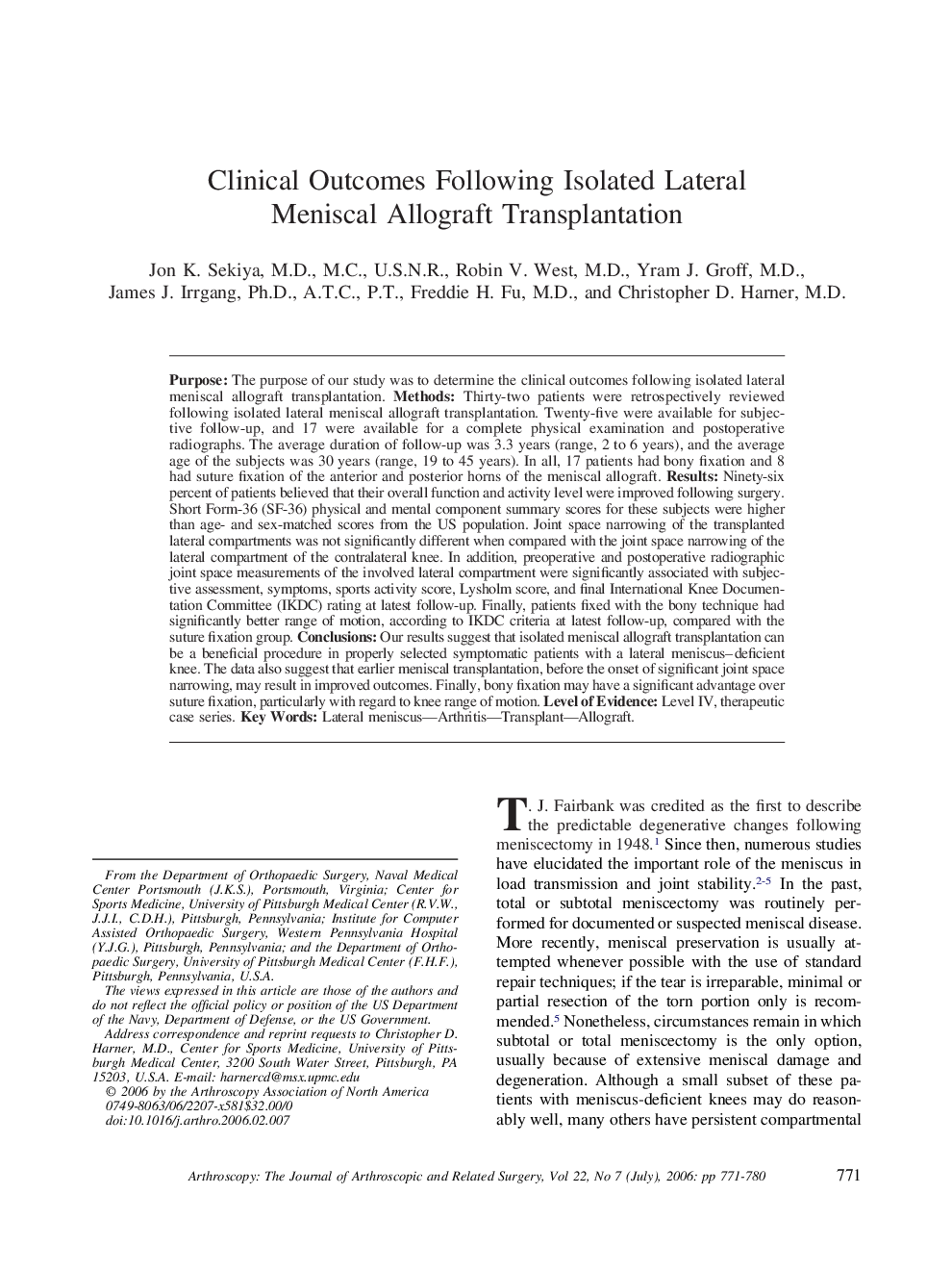| Article ID | Journal | Published Year | Pages | File Type |
|---|---|---|---|---|
| 4047701 | Arthroscopy: The Journal of Arthroscopic & Related Surgery | 2006 | 10 Pages |
Purpose: The purpose of our study was to determine the clinical outcomes following isolated lateral meniscal allograft transplantation. Methods: Thirty-two patients were retrospectively reviewed following isolated lateral meniscal allograft transplantation. Twenty-five were available for subjective follow-up, and 17 were available for a complete physical examination and postoperative radiographs. The average duration of follow-up was 3.3 years (range, 2 to 6 years), and the average age of the subjects was 30 years (range, 19 to 45 years). In all, 17 patients had bony fixation and 8 had suture fixation of the anterior and posterior horns of the meniscal allograft. Results: Ninety-six percent of patients believed that their overall function and activity level were improved following surgery. Short Form-36 (SF-36) physical and mental component summary scores for these subjects were higher than age- and sex-matched scores from the US population. Joint space narrowing of the transplanted lateral compartments was not significantly different when compared with the joint space narrowing of the lateral compartment of the contralateral knee. In addition, preoperative and postoperative radiographic joint space measurements of the involved lateral compartment were significantly associated with subjective assessment, symptoms, sports activity score, Lysholm score, and final International Knee Documentation Committee (IKDC) rating at latest follow-up. Finally, patients fixed with the bony technique had significantly better range of motion, according to IKDC criteria at latest follow-up, compared with the suture fixation group. Conclusions: Our results suggest that isolated meniscal allograft transplantation can be a beneficial procedure in properly selected symptomatic patients with a lateral meniscus–deficient knee. The data also suggest that earlier meniscal transplantation, before the onset of significant joint space narrowing, may result in improved outcomes. Finally, bony fixation may have a significant advantage over suture fixation, particularly with regard to knee range of motion. Level of Evidence: Level IV, therapeutic case series.
